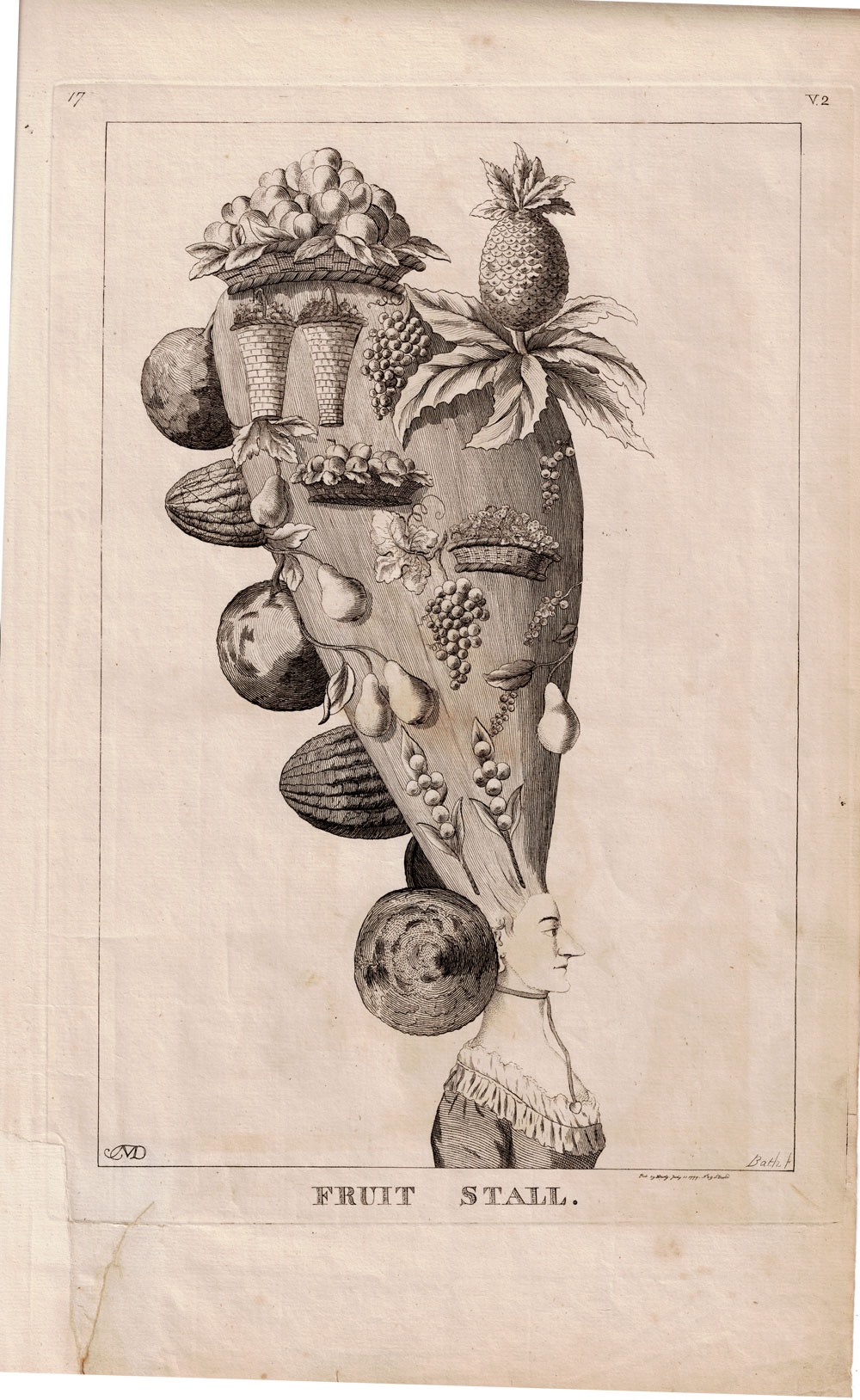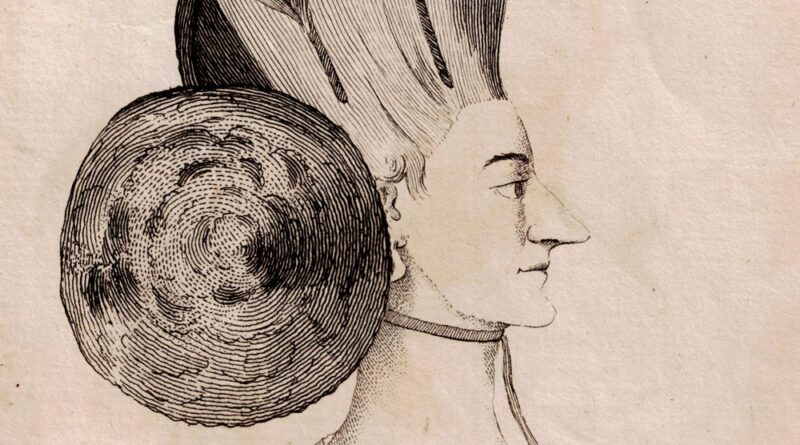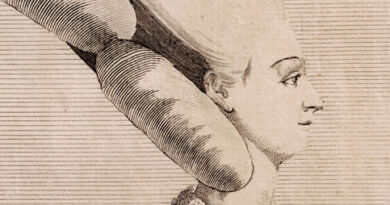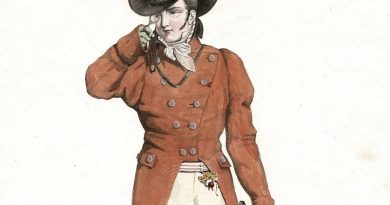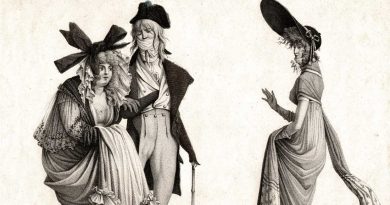Darly Caricature: The Fruit Stall
Engraving by Matthew and Mary Darly of a woman’s towering hairstyle entitled “Fruit Stall” – Dated July 11, 1777.
Copies in multiple museums including the collection of the Victoria and Albert Museum, London.
Condition: As shown (see full sheet at bottom). Tear and repair lower left
Dimensions: Approx 44 x 27 cm (full sheet)
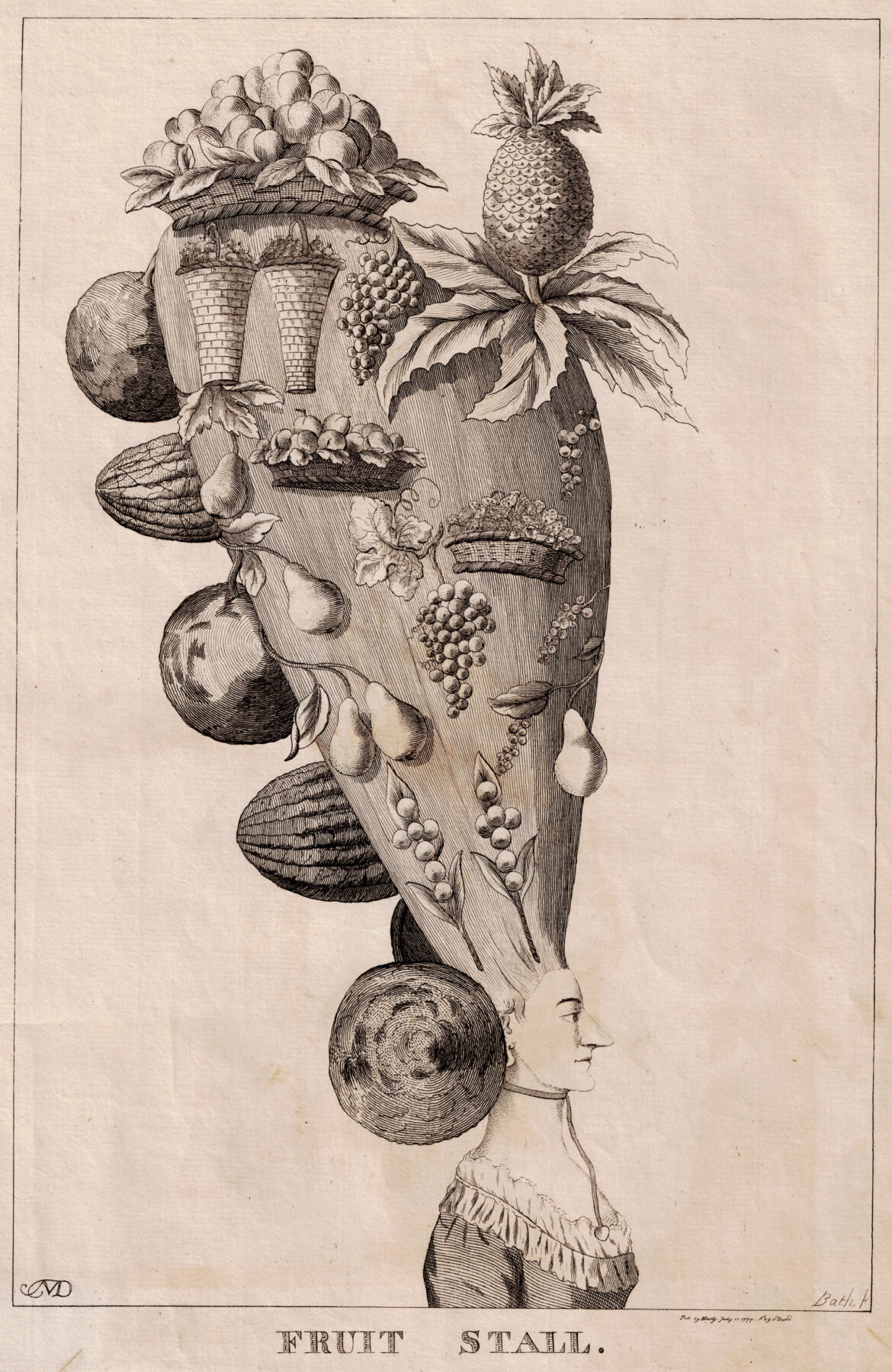
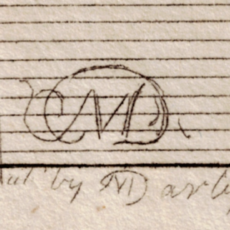
Matthew and Mary Darly were a husband wife team famous in the 18th Century for their amusing engravings of the fashionable life of the Rococo period. Their highly popular prints, which became known as “Macaronis” after the expression describing a dandy of the period, can be found today in Museum collections around the world including the British Museum, Victoria and Albert, and the Metropolitan Museum of Art.
Matthew Darly worked with the famous furniture designer Thomas Chippendale and was responsible for engraving most of the illustrations in The Gentleman and Cabinet-Maker’s Director which presented an array of furnishing styles including the French-inspired ‘modern taste’ which later became known as rococo. In the 1750s, Matthew Darly worked with the famous natural history illustrator George Edwards in the wallpaper business. Engaged in the social life and politics of London at this time, Matthew Darly was both an artist and an activist. He ran into legal trouble at one point for his prints mocking the Duke of Cumberland. He was instrumental in saving the life of John Wilkes ( the British parliamentary reformer and who was supportive of the American war of independence) who faced a threat of death at the hands of James Dunn.
Mary Darly, a talented artist who was one of Britain’s first professional caricaturists became Matthew’s second wife and business partner. The couple developed a new style of engravings satirizing in exaggerated form the fashionable manners, dress and hairstyles of the 1770s in London and the dandy dressers of the period who were known as “Macaronis.” The engravings the couple sold in series of copperplate prints in their successful shops in London. Among their best known engravings are several featured here including “Wigs” (12 October 1773) and “Oh. Heigh. Oh. Or a View of the Back Settlements” (9 July 1776).
